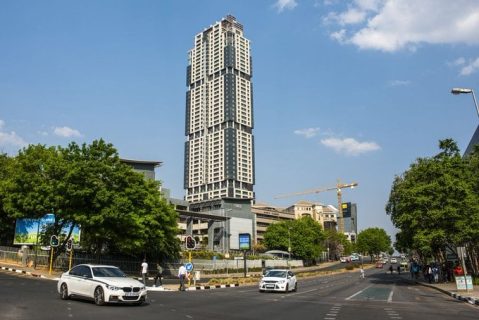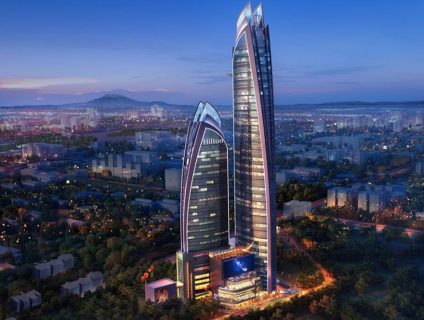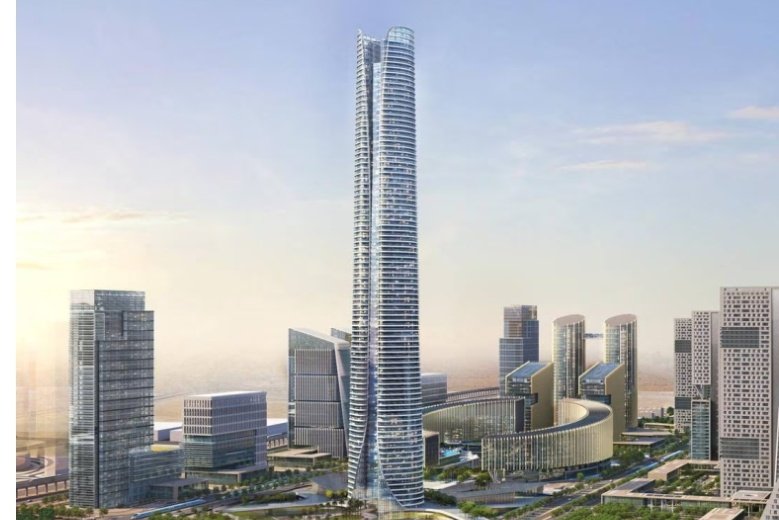Africa, a land of rich culture and diverse landscapes, is currently undergoing a striking transformation in its architectural profile. The evolution of high rises in Africa is a captivating journey that intertwines history and modernity, reflecting the continent’s aspirations and achievements in vertical urban development.
This article delves into the intriguing narrative of how Africa’s skyline has evolved over time. It also sheds light on its towering structures, architectural marvels, and the ambitious blueprints charting its future.
Does Africa have skyscrapers?
The continent has a lot of skyscrapers in different cities scattered from west to south, north to east. Dispelling the myth, Africa is indeed witnessing the ascent of skyscrapers that redefine its cityscapes.
These towering structures, once a rarity on the continent, now stand as symbols of progress and economic vitality. As African nations embrace urbanisation and economic growth, skyscrapers are emerging as powerful icons, reshaping skylines and echoing the continent’s ambitions and accomplishments.
Which is Africa’s highest building?

The race for Africa’s tallest building is a dynamic one, encapsulating the continent’s unwavering drive to touch the heavens. Currently, the Iconic Tower in the New Administrative Capital of Egypt holds this prestigious title. The tower is 393.8 meters (1,292 ft) tall.
However, the terrain of African architectural achievement is ever-evolving. Thus, ambitious projects are poised to ascend and claim this accolade in the near future.
Symbio-City, also called Centurion Symbio-City, is a planned skyscraper in Centurion, Gauteng, South Africa. If constructed, it would become Africa’s tallest building at 447 meters. The project envisions three buildings, with the largest situated over Centurion Lake.
Which is the first tallest building in Africa?
Africa’s journey in the realm of high-rise structures has been marked by pivotal milestones. The Great Pyramids of Giza, located in Egypt, are among the oldest standing buildings in Africa.
The NECOM House in Lagos, Nigeria, stood as West Africa’s inaugural tallest building upon its completion in 1979. This achievement signalled a leap forward in African architectural ambition, laying the foundation for towering accomplishments across the continent.
Which African city has the most skyscrapers?
The vibrant city of Johannesburg in South Africa stands out as a nucleus of vertical development, boasting one of the most impressive clusters of skyscrapers in Africa. The evolving skyline of this city mirrors its economic dynamism and urban metamorphosis.
What is the tallest building in Africa by 2050?

The forecast for Africa’s architectural horizon is nothing short of visionary. With urbanisation accelerating and economies flourishing, grand designs are being woven to reshape skylines.
By 2050, the Symbio-City is set to grace Centurion, Gauteng, South Africa, if plans go through. A symbol of continental unity and global ambition, this landmark captures Africa’s determination to forge architectural marvels of profound significance.
READ ALSO: The evolution of high-rise design in Asia
Shaping the future skyline
The evolution of high rises in Africa encapsulates ambition, innovation, and cultural heritage. As nations compete for vertical supremacy, Africa’s skylines are evolving, harmonising heritage with modernity. With impressive projects under construction like the Pinnacle Tower in Nairobi, Kenya, and the Hass Towers in Nairobi, Africa’s architectural trajectory promises even loftier, more iconic structures.
The evolution of high rises in Africa speaks of growth, aspiration, and creative ingenuity. From the historical landmarks to the impending supertall spectacles, Africa’s skyline serves as a canvas mirroring its heritage and its pursuit of global prominence in the architectural landscape. This evolving skyline echoes Africa’s dynamic spirit, bridging traditions with a resolute vision for the future.

